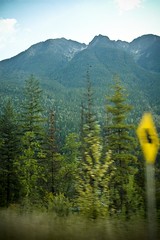The raspberry red we bought from Home Depot dried a violent pink on the wall, the pink of a small girl’s pink velvet stirrup pants in the 80’s, even after seven coats. I swore upon seeing it the next morning, having forgotten overnight how appallingly bright it turned out. Gah. My eyes. Anyone’s eyes! Amazing what a bit of colour will do. Oi. Change the whole place, it does. Yes. Into a bad television set for brain damaged teenagers, all ironic and post-hateful and too cheerful for words.
I’m very glad we discovered this before we painted more than one space with it, though not so glad that we didn’t start with the spare room wall and not the kitchen. Small mercies duking it out with slightly bigger regrets. Who will win? News at eleven.
To rectify this horrible mistake, David and I spent part of our Remembrance Day with our heads bowed in the heavy crush of DIY sawdust yuppies at Home Depot. We had the paint retinted darker and bought a tiny tin of sinfully delicious red that we’re going to pour in before painting the next, more hopeful, coat. A final gasp for our currently blinding kitchen. Apparently Nicole is going to be over again today while I’m at work, hanging out with David who’s sick today, and painting. If that doesn’t work, I’m going to spraypaint it matte black, out of adorable girlish spite.





